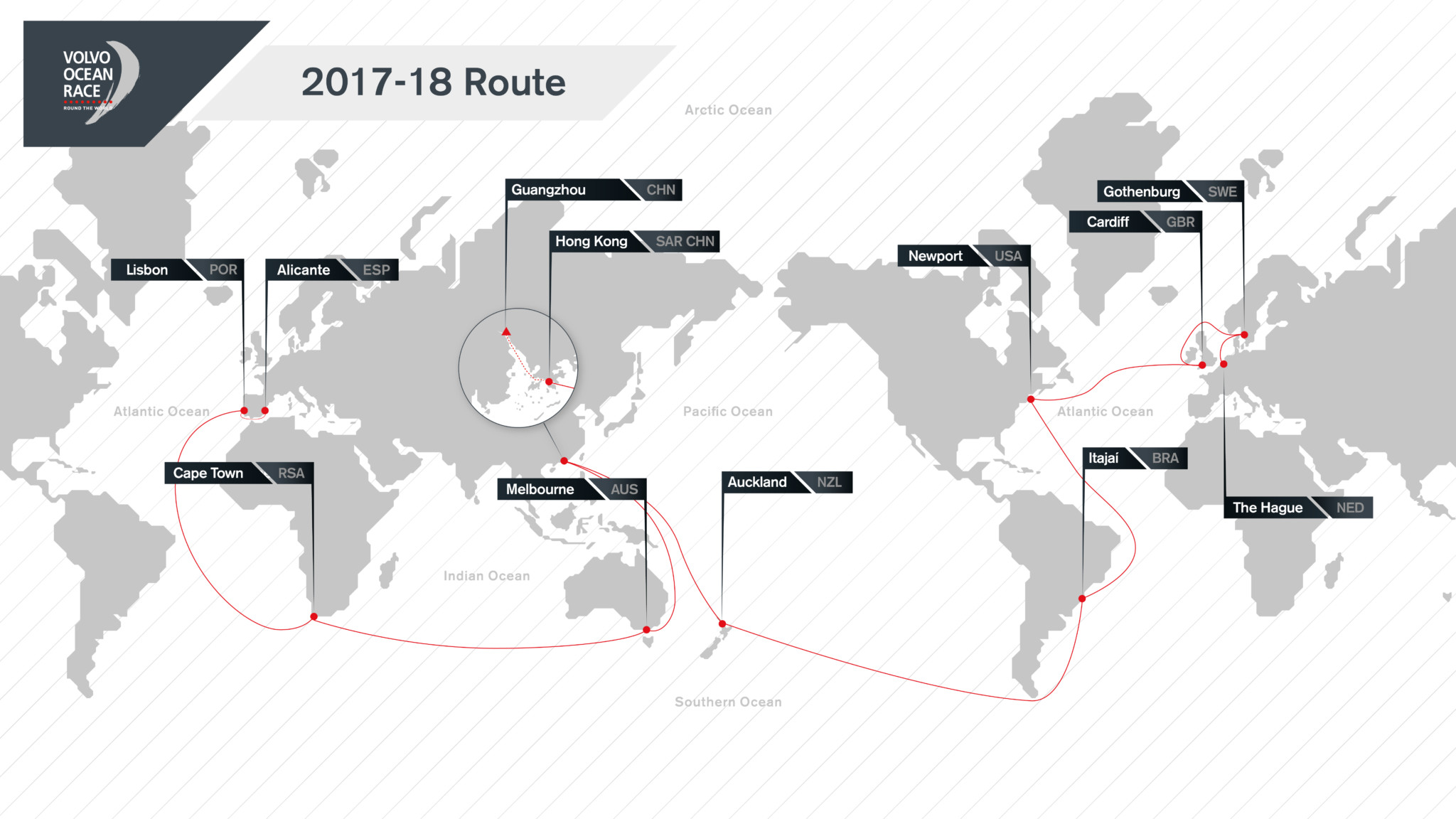Securing the safety for all concerned
Published on February 21st, 2018
by Craig Leweck, Scuttlebutt
The Volvo Ocean Race 2017-18 is governed by the Racing Rules of Sailing, and it is in this document which states that when a boat sailing under these rules meets a vessel that is not, she shall comply with the International Regulations for Preventing Collisions at Sea (COLREGS).
The COLREGs are published by the International Maritime Organization and set out, among other things, the “rules of the road” or navigation rules to be followed by ships and other vessels at sea to prevent collisions between two or more vessels.
Within the COLREGs it states:
• Every vessel shall at all times proceed at a safe speed so that she can take proper and effective action to avoid collision and be stopped within a distance appropriate to the prevailing circumstances and conditions.
• Every vessel shall use all available means appropriate to the prevailing circumstances and conditions to determine if risk of collision exists. If there is any doubt such risk shall be deemed to exist.
When the teams competing in the Volvo Ocean Race approach the finish of each leg, their diligence is imperative to ensure safe passage through the coastal traffic, but this was still not enough to keep Vestas 11th Hour Racing from a collision with a fishing boat when just 30 nm from the finish in Hong Kong, sinking the boat which led to one fatality.
From the tracker, the data showed the VO65 was traveling at 20 knots in 23 knots of wind. It was dark, and while high speed reaching, with spray flying and the boat groaning, I can only assume the sailors never saw the fishing boat.
Following the COLREGs, sailing slowly through waters known to be chaotic with fishing traffic and container ships, should have avoided collision. However, this is a race, and as irresponsible as it may sound, teams aren’t going to throttle back unless they see something.
The overriding problem is darkness, and if the Volvo Ocean Race wants to continue to finish its legs in high traffic areas, it needs to finish during daylight hours. If the race organizers are not capable of creating safe boundaries for the finish, as they do for the start, then they must adjust the course length for a safer arrival.
They have already proven capable of this, as such a feature was utilized during Leg 1 to provide a fan-friendly finish time into Lisbon. With the possibility known to teams in advance of the start, a virtual mark was added to Leg 1 in such a way to lengthen the course by approximately 200 miles but with no bearing on strategy.
I do expect Vestas 11th Hour Racing to soon provide facts of how the collision occurred, and I can only hope that serious thought is being given by race organizers to mitigate such a situation from happening again. I want these races to be celebrated with starts and finishes within sight of land, but not unless safety can be secured for all concerned.
Race details – Tracker – Scoreboard – Race route – Facebook – YouTube
2017-18 Edition: Entered Teams – Skippers
• Team AkzoNobel (NED), Simeon Tienpont (NED)
• Dongfeng Race Team (CHN), Charles Caudrelier (FRA)
• MAPFRE (ESP), Xabi Fernández (ESP)
• Vestas 11th Hour Racing (DEN/USA), Charlie Enright (USA)
• Team Sun Hung Kai/Scallywag (HKG), David Witt (AUS)
• Turn the Tide on Plastic (POR), Dee Caffari (GBR)
• Team Brunel (NED), Bouwe Bekking (NED)
Background: Racing the one design Volvo Ocean 65, the 2017-18 Volvo Ocean Race begins in Alicante, Spain on October 22 2017 with the final finish in The Hague, Netherlands on June 30 2018. In total, the 11-leg race will visit 12 cities in six continents: Alicante, Lisbon, Cape Town, Melbourne, Hong Kong, Guangzhou, Auckland, Itajaí, Newport, Cardiff, Gothenburg, and The Hague. A maximum of eight teams will compete.
Source: Volvo Ocean Race










 We’ll keep your information safe.
We’ll keep your information safe.